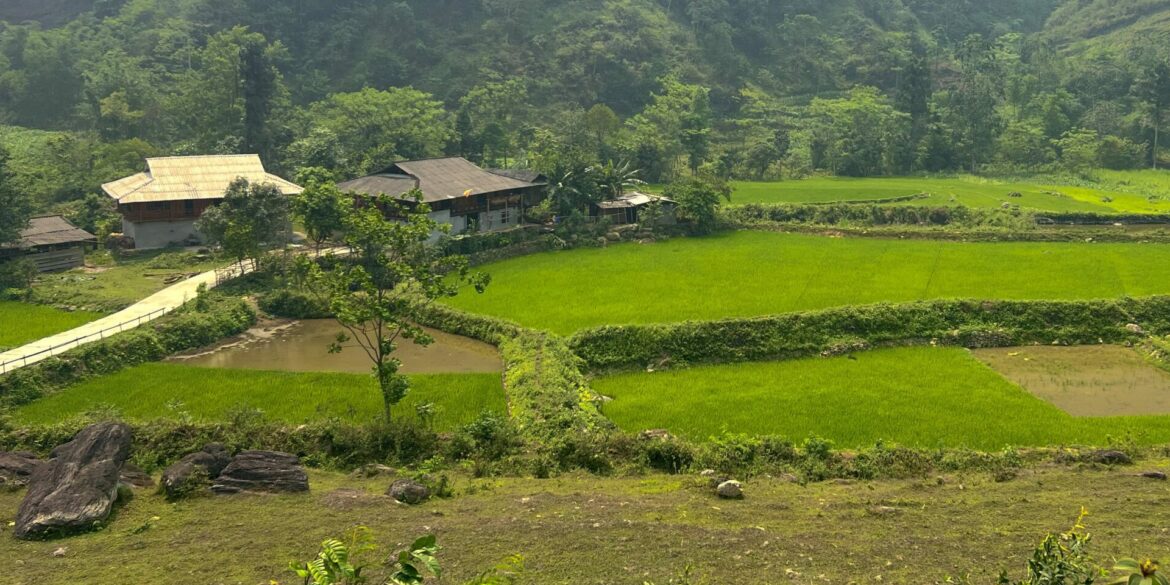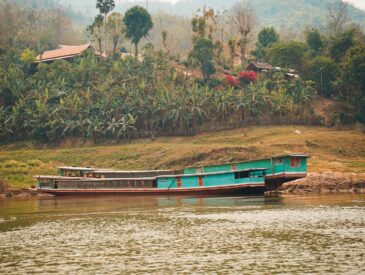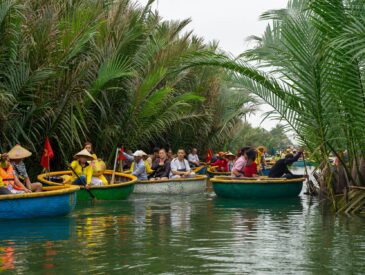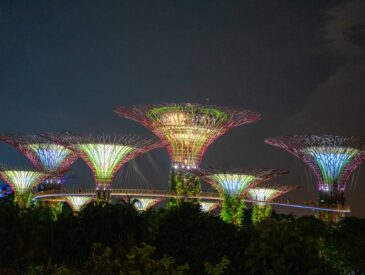Table of Contents
Visiting Vietnam fascinates many travelers thanks to its rich and diverse culture, impressive landscapes, and exceptional cuisine. If you’re planning a trip to Vietnam, it’s important to be well-informed about what to know about traveling to Vietnam.
That’s why we’ve decided to write this practical guide to help you prepare for your trip to Vietnam. This article will give you all the information you need to understand this country. We’ll go over entry and residence formalities, the best times to travel, and other information that will be useful during your trip. We hope this article will help you to travel safely. We’re off!
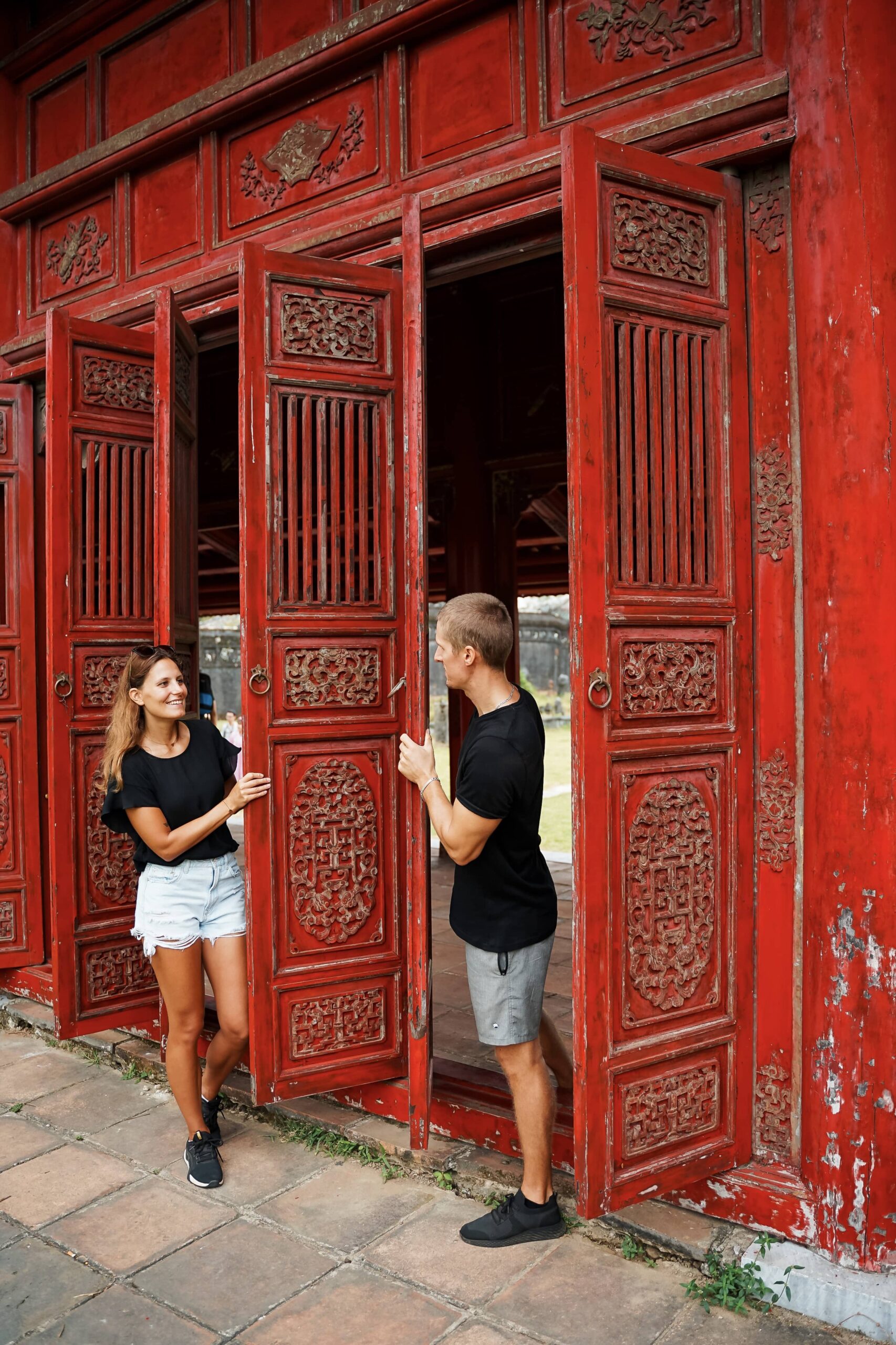
What to know about traveling to Vietnam?
When to go to Vietnam?
Vietnam’s peculiar shape is the source of major climatic variations from north to south, and you need to equip yourself accordingly.
Vietnam’s climate
In terms of weather, the country can be divided into two different regions. The north is characterized by a tropical monsoon climate with four seasons. The south has a subtropical climate with two seasons: the dry season and the rainy season.
To find out the best times to visit Vietnam, we’d like to give you some idea of the weather variations in three main parts of the country, from north to south. This is where you’ll find the most favorable departure plan for you, month by month, region by region.
Best time to visit North Vietnam
There are 4 seasons in the North:
- Winter, cold and wet, from December to March.
- Spring, from March to the end of April.
- Summer, is hot and humid, from June to the end of September.
- Autumn, from October to the end of November.
There are two best periods to discover northern Vietnam: March-April and September-November. During these periods, pleasant temperatures and plenty of sunshine await you both in the cities and the mountains.
Best time to visit Central Vietnam
There are 2 seasons in Central Vietnam:
- Wet season, October to February
- Dry season, March to September
The best time to visit Central Vietnam is between February and the end of May. The weather is often fine and temperatures are quite bearable. You’ll have the chance to see beautiful stretches of rice paddies in the countryside, but also to spend some memorable moments with a seaside getaway in the sunshine.
Best time to visit southern Vietnam
The south is characterized by 2 seasons:
- The dry season, from November to the end of April, is characterized by dry, sunny weather. This is also the best time to visit southern Vietnam.
- The rainy season, from May to October, is characterized by high temperatures, high humidity and intermittent but brief rains.
There’s no such thing as a bad season for visiting Vietnam. If it’s cold and foggy in one region, there’s always another sunny one with glorious weather. Travelers can take full advantage of their geographical complexity by considering the best time to discover each region.
We traveled in Vietnam in April and the weather was generally good, except in the Sapa region where it could be cooler and cloudy.
Getting around in Vietnam
There are several ways to get around in Vietnam, each with its advantages and disadvantages. Here is a list of the most common way of transport in Vietnam. All that transportation listed here can be booked via the 12go website.
Means of transport
- Train: this is a popular transport in Vietnam, especially for long-distance journeys. There are many train lines crisscrossing the country, and fares vary according to the class of travel chosen.
- Bus: we traveled mainly by bus in Vietnam. Numerous bus companies are serving the whole country. Fares vary according to distance and comfort. You should try the VIP Limousine Bus, it’s an excellent experience.
- Tuk-tuk: Vietnam is a Southeast Asian country, so tuk-tuks are very common. They are generally inexpensive and easy to find in major cities. Always remember to negotiate prices, as the Vietnamese will not hesitate to charge you more than the locals. In some countries, you can book a tuk-tuk via the 12go app.
- Plane: As the country is quite vast, there are many airports scattered all over the country. However, this means of transport is more expensive than road transport.
Be careful when traveling in Vietnam. Local driving can be dangerous due to heavy traffic and poor road conditions in some areas.
Getting from city to city
To reach the northern, central, and southern regions, we advise you to fly if you’re short of time. Otherwise, I recommend taking the day or night bus. Trains between Hanoi and Sapa are well-equipped. As the route is long and fairly busy, the railway companies have quickly adapted to offer quality services.
Getting around the cities
In Vietnam’s cities, the situation remains the same. Motorcycles invade the streets, offering a surprising and frequently impressive sight to foreign visitors. Motorcycle cabs enable a traveler to get around the city. If you’re traveling as a couple, you’ll need two motorcycle cabs. Cab cars also crisscross the streets. Their number remains limited.
Practical Guide: Visiting Vietnam
- Visa: French nationals (only) are exempt from visa requirements for stays in Vietnam not exceeding 45 days (single entry; days of entry and exit included). A visa is required for stays of more than 45 days (or multiple entries). Visa required for Belgians, Swiss, and Canadians. To apply for an e-visa, please visit the Vietnamese immigration website.
- Passport: Your passport must be valid for 6 months after your return date.
- Health: No vaccinations are required, except against yellow fever for travelers from countries in sub-Saharan Africa and Latin America where the disease is present.
- Currency: The national currency is the dong (VND). It is only available in banknotes (no coins). Beware: 20,000 dong and 5,000 dong bills are the same blue color and look very similar.
- Population and language: Asia’s third most populous country, Vietnam will reach 100 million inhabitants in 2023, the vast majority of whom are Kinh (Viet). The rest of the population is made up of 54 ethnic minorities: Cham, Khmer, but also Dao, Hoa (Chinese), Muong, Thai, etc. As everywhere, the population is increasing in the big cities, while the agricultural regions are gradually being depopulated. The official language is Vietnamese, inspired by Khmer, Chinese, and Thai.
- Religion in Vietnam: 70% of Vietnamese are Buddhist.
- Time difference: Vietnam is at GMT+7, i.e. in summer there’s a 5-hour time difference and in winter there’s a 6-hour time difference.
- Travel insurance: For peace of mind and to avoid any unforeseen events, travel insurance is very important.
- Accommodation: Vietnam is known as one of the cheapest destinations in the world. Its range of hotels has expanded and improved considerably in recent years to meet every need and every budget. From hostels to mini-hotels, from luxury hotels to luxury springs, you’ll be spoilt for choice when it comes to where to sleep, whether in the big city or the countryside. One way to discover the real Vietnam is to stay with a local. Although not yet common in the cities, this option is available in certain regions through your travel agency.
- Safety: Vietnam is a relatively safe country for travelers from all over the world. You can go there with your eyes closed. However, as is the case everywhere, you need to be on the lookout for scams, as they can be plentiful. Unfortunately, the only thing we found disappointing about Vietnam was the hospitality of its people. And yet, they are reputed to be welcoming and kind to tourists. But we didn’t feel the same way about the locals. On several occasions, we found them mean, arrogant, and ill-mannered.
- Airports in Vietnam: Vietnam has 22 airports, 9 international and 13 domestic.
- Public holidays: – January 1ᵉʳ: New Year’s Day. – Between January 19 and February 20: Tet Festival, which is the Vietnamese New Year according to the lunar calendar. – February 3: Anniversary of the founding of the Vietnamese Communist Party. – April 30: Saigon Liberation Day (each city has its celebration between mid-April and early May). – May 1ᵉʳ: Labor Day. – September 2: National Day (the 1945 founding of the Democratic Republic of North Vietnam by Hô Chi Minh).
- Cuisine in Vietnam: Vietnamese cuisine is undoubtedly the best-known Asian cuisine in Europe since the expatriation of its inhabitants. Different in each region, it is always based on rice, which replaces our bread, steamed, fried, or glutinous.
- Transport in Vietnam: Vietnamese drivers drive on the right, but there are no Highway Code regulations. However, given the traffic and the presence of many two-wheelers, speed rarely exceeds 40-50 km/h. You will not be allowed to take the wheel.
- Bank charges: There are bank charges in Vietnam. And this is something you need to understand because you can quickly be taken for a ride. Bank charges in this country can vary depending on the bank and the services used. When you go to a bank to withdraw cash, it will systematically apply bank charges, even if you have an international card. Fortunately, there are still banks in Vietnam that don’t apply any additional charges when you withdraw cash. The best-known are VP Bank, TP Bank, Eximbank, Baoviolet, BBVA, Saigon Bank, and Vietbank Pa.
- Mobile plan: There are several phone plans for tourists in Vietnam, offering low rates for calls, SMS, and data. Here are a few examples of popular phone plans in Vietnam. The best package is Viettel: this is one of the leading cell phone operators in Vietnam. It offers data packages valid from 1 to 30 days, with options ranging from 1 to 20 GB of data. Vinaphone: this is a reliable operator in Vietnam. Its network coverage is good and it offers almost the same as its two competitors.
- Water and food: Tap water is not drinkable. We recommend that you drink bottled water, which you have checked beforehand. Avoid shellfish, seafood, and undercooked meats. Rest assured, however, that serious health problems are rare in Vietnam. The country’s level of health safety is generally good, and there are plenty of hospitals to call on in case of need.
Tip: Download the 12go application. 12go is an electronic ticketing platform for medium and long-haul travel, covering all possible transport options (ferry, bus, train, flight, private transfer, and minibus).
We’ve booked a lot of transport via this site and have been very satisfied with the service! The customer service team reacts quickly if you ever have a problem with one of the transport companies.
We hope you’ve enjoyed our comprehensive guide about – What to know about traveling to Vietnam. Don’t hesitate to consult our other articles about Vietnam if you’d like to know more. The articles are available by clicking here.
If you’re interested in Asia, take a look at our other articles about our trip to Southeast Asia.

